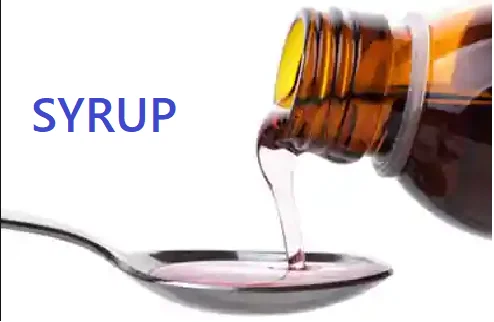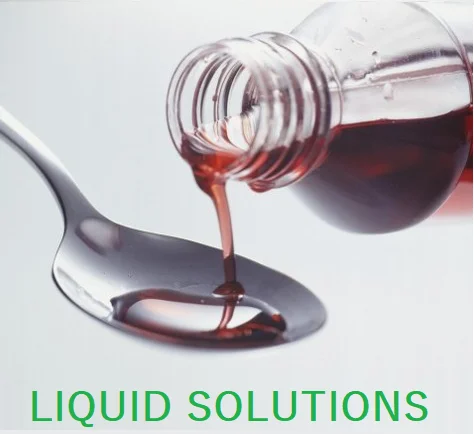MFR OF CETRIZINE DIHYDROCHLORIDE SYRUP
PURPOSE: This Standard Operating Procedure is written to describe the formulae, manufacturing procedure, specifications, packing details of dosage form.
SCOPE: This procedure is performed and is applied during the manufacturing of dosage form.
RESPONSIBILITY / ACCOUNTABILITY:
It is the responsibility of Manufacturing Chemist to follow and adhere to this SOP. The Production Pharmacist, QC/QA Manager and cGMP Administrator are accountable for the strict adherence to the master
COPY ISSUED TO:
- Master Copy : Manager Quality Assurance
- Copy No. 1 : Production Pharmacist
- Copy No . 2 : Manager Quality Control
- Copy No . 3 : cGMP Administrator
- Copy No. 4 : Liquid Section
| PRODUCT NAME:CETRIZINE DIHYDROCHLORIDE SYRUP | BATCH SIZE: 1000 LTRS. |
| PRODUCT REFERENCE CODE: | UNIT SIZE: 60 ml |
| GENERIC NAME: CETRIZINE DIHYDROCHLORIDE SYRUP | PACK SIZE: 12 x 12 x 60 |
| DOSAGE FORM: SYRUP | STRENGTH: N.A. |
| DEPARTMENT: LIQUID DEPARTMENT | EXPIRY DATE: AFTER 24 MONTHS FROM THE DATE OF MANUFACTURING |
COMPOSITION:
Each 5 ml contains:
Cetrizine Dihydrochloride B.P. 5 mg
EQUIPMENTS TO BE USED:
| SR. NO. | NAME OF EQUIPMENT | ASSEMBLING AS PER SOP NO. | CLEANING AS PER SOP NO. |
| 1 | Sugar Syrup Manufacturing Tank | ||
| 2 | Sugar Storage Tank | ||
| 3 | Charging Tank – 1000 Ltrs. | ||
| 4 | Filter Press | ||
| 5 | Storage Tank – 1000 Ltrs | ||
| 6 | Linear Bottle Washing Machine | ||
| 7 | Linear Bottle Filling And Sealing Machine | ||
| 8 | Automatic Bottle Labelling Machine | ||
| 9 | Shrink Packing Machine |
RAW MATERIAL DETAILS
| S.NO. | INGREDIENTS | STD | Theoretical Quantity Req. | Overages % | Total Quantity Used |
| 1. | CETRIZINE DI HCL | I.P. | 1.000 | 5.00 | 1.050 KGS |
| 2. | CITRIC ACID | I.P. | 0.300 | 0.300 KGS | |
| 3. | ORANGE FLAVOUR | F.G. | 2.000 | 2.000 LTRS | |
| 4. | SODIUM BENZOATE | I.P. | 5.000 | 5.000 KGS | |
| 5 | SORBITOL SOLUTION | I.P. | 50.000 | 50.000 KGS | |
| 6 | SUGAR | F.G. | 500.000 | 500.000 KGS |
PACKING MATERIAL DETAILS
| S.NO. | NAME OF THE MATERIAL | THEORETICAL QUANTITY REQ. | FOR RECORD | TOTAL QUANTITY USED |
| 1. | 60 ML AMBER ROUND BTLS. | 16666.666 | 16666.666 NOS. | |
| 2. | ADHESIVE TAPE ROLL BROWN | 3.000 | 3.000 NOS. | |
| 3. | UNIT CARTON | 16666.666 | 2.000 | 16668.666 NOS. |
| 4. | LABEL | 16782.406 | 3.000 | 16785.406 NOS. |
| 5. | GUM ACCACIA | 1.500 | 1.500 KGS | |
| 6. | PILFER PROOFS CAPS 25MM | 16666.666 | 16666.666 NOS. | |
| 7. | CORRUGATED BOX R | 115.740 | 115.740 NOS. | |
| 8. | SHRINK FILM 240X220 MM | 1388.888 | 1388.888 NOS. |
MANUFACTURING SPECIFICATION:
- Average fill of each Bottle is 60 ml.
- Volume variation limit allowed in each filled Bottle is 60 ml to 61 ml.
- Make up the final volume of the syrup accurately.
Filter the completely charged batch using Filter Press L-21 by operating it as per its SOP.
- Transfer the syrup from charging tank L-08 to storage tank L-12 after complete charging of batch.
- Mix the batch, Fill the bottles and also perform the primary packing of bottles at temperature not more than 250 C and Relative Humidity not more than 40.
- Yield:
- Theoretical Yield is 16666 Bottles.
- Expected Practical Yield is 16666 + 2% Bottles.
Packing Details:
- Wash the bottles on Linear Bottle Washing Machine L-28 and operate it as per its SOP.
- Transfer the Syrup from storage tank to Linear Bottle Filling and Sealing Machine for filling and Sealing of the bottles as per its SOP.
- Fill 60 ml syrup in amber glass bottle and use 25 mm PP Cap to seal the bottle mouth.
- Inspect the each filled and sealed bottle for proper sealing and presence of the foreign particles, if any.
- Label every inspected bottle by using the Automatic Bottle Labelling Machine .
- Pack each filled and sealed bottle in unit carton individually.
- Make a group of 12 bottles packed in unit cartons.
- Wrap this bundle in the thermoplastic film and shrink pack it by operating Shrink Packing Machine as per its SOP .
- Pack such 12 shrinked packets in the Corrugated box. Thus each corrugated box contains 12 x 12 x 60ml filled and sealed bottles.
- Seal each corrugated box with adhesive tape and label it properly by affixing the specified label.
MANUFACTURING PROCESS:
- I) Preparation of Sugar Syrup:
- Take DM water 160 Ltrs into Stainless Steel Steam Jacketed Sugar Syrup Preparation Tank.
- Run the steam into the jacket so as to heat the water.
- Add 500 kgs of sugar into the tank and start stirring by operating the tank .
- Heat continuously till the sugar dissolves completely to give uniform Sugar Syrup.
- Transfer the prepared Sugar Syrup to Sugar Syrup Storage Tank through transfer pump.
- Transfer the prepared Syrup from Sugar Syrup Storage Tank to Charging Tank through transfer pump.
- II) Addition of Ingredients into the Charging Tank while stirring continuously:
- Dissolve 5.0 kgs of Sodium Benzoate in 30 Ltrs of purified water and add to the bulk batch.
- Dissolve 0.300 kgs of Citric Acid in 5 Ltrs of purified water and add to the bulk batch.
- Add 50.0 kgs of the Sorbitol to the bulk batch.
- Dissolve 1.050 kgs of Cetrizine Di Hydrochloride in 10 Ltrs of purified water and add to the bulk batch.
- Add 2.0 Ltrs of Orange Flavour to the bulk batch.
- Make up the volume with purified water and mix for 30 minutes.
- Check the pH of Solution to be in between 4.5 – 5.0.
- Filter the batch through Filter Press by operating it as per its SOP.
- and transfer it to the Storage Tank .
Send the sample to Quality Control Department for bulk testing.
IN-PROCESS CONTROLS:
The following in-process controls should be maintained during the processing:
- Check Raw materials used for manufacturing purpose are all approved materials and have ‘Released’ labels fixed on it.
- All weighed Raw materials should be counter-checked by Manufacturing Chemist. If any discrepancy is noticed, it should be immediately brought to the notice of Production Pharmacist and QC/QA Manager.
- Physical characteristics of Raw material like colour, odour, and consistency are checked before compounding.
- Final volume should be made as per Standard Operating Procedure using correct dipstick in the Assistant Manufacturing Chemist.
- pH of the bulk should be checked and it should be with in specified limits.
- Bulk sample should be sent for analysis to Quality Control Department before starting the filling and sealing stage.
- Intermittently filled volume should be checked at 30 minutes intervals by the Assistant Manufacturing Chemist and record for the same should be kept in Batch Manufacturing Record.
- The net volume should be checked for all the filling nozzles and in no case, net volume should be less than volume claimed on the label.
Limit for Volume Variation: Volume claimed on the label + 2ml
- Visual inspection of filled and sealed bottles should be done as per SOP and the record of the same should be kept in the Batch Manufacturing Record.
- Suspensions should be filled under constant slow speed stirring to maintain uniformity of contents.
- The labels and cartons should be checked thoroughly for proper batch coding.
- Intimation should be sent to Quality Control Department for finished product sampling and testing.
- After the completion of labelling and packaging, the coded labels and cartons should be accounted for and rejected printed material should be destroyed in the presence of QC/QA Manager. Maintain the destruction of the same in the Batch Manufacturing Record.
- It will be ensure that filling or packaging equipment has been properly cleaned.
- Filling or packaging of next product should not commence until the ‘Line Clearance’ has been given by the IPQA.

